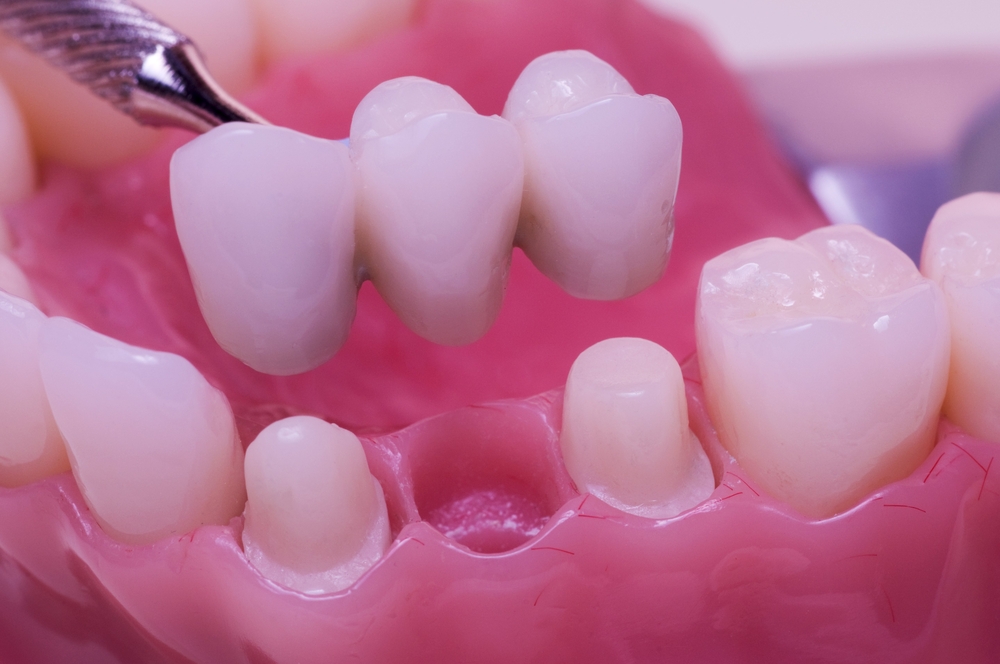Transform Your Smile with Dental Bridges

If you are dealing with the unfortunate situation of missing teeth, it is quite normal to feel self-conscious about your smile. The absence of teeth can be noticeable and may impact your confidence. Missing teeth can also make simple daily tasks such as eating and talking more challenging.
Fortunately, dental bridges offer a solution to restore functionality and appearance, contributing to total oral health. This article will discuss how dental bridges work, the process of getting one, and the different types of bridges available.
How Dental Bridges Work
Prosthetic devices known as dental bridges serve the purpose of tooth replacements. It involves one or more fake teeth, known as pontics, that are secured by dental crowns on both sides. The crowns are set on the teeth next to the gap, and the pontic is hung between them, successfully “bridging” the gap. This creates a natural-looking and functional replacement for the missing tooth.
The Process of Getting a Dental Bridge
Obtaining a dental bridge usually requires two to three dental appointments. The initial visit involves preparing the teeth next to the gap for crowns, which includes removing a slight layer of enamel. Following this, dental impressions are made and forwarded to a laboratory, where your tailored bridge is crafted. Meanwhile, you’ll receive a temporary bridge to safeguard your teeth and gums until the permanent one is prepared.
When your permanent bridge is prepared, you’ll return for a follow-up appointment at the dentist’s office. At this visit, the temporary bridge will be removed, and the permanent one will be assessed for fit and comfort. Any necessary adjustments will be made before the bridge is cemented into place. Sometimes, a third visit may be required to ensure the bridge is functioning correctly and make any final adjustments.
Types of Dental Bridges
There are three types of dental bridges: traditional, cantilever, and Maryland. Traditional bridges are the most common, consisting of a pontic suspended between two dental crowns. Cantilever bridges get their support from only one neighboring tooth. Unlike the typical requirement for crowns, Maryland bridges employ a metal or porcelain structure that is attached to the backside of the adjacent teeth.
The materials used for dental bridges vary, but the most common are porcelain, porcelain-fused-to-metal, and zirconia. Porcelain is the most natural-looking option, but it is not as strong as metal or zirconia. Porcelain-fused-to-metal bridges offer both strength and aesthetics, while zirconia bridges are the strongest and most durable option.
Longevity of Dental Bridges
Dental bridges have an average lifespan that typically ranges between 5 to 15 years, depending on various factors such as the patient’s oral hygiene practices, the materials used in the bridge, and the overall health of the patient’s teeth and gums. Some bridges may need early replacement due to wear and tear, while others can last longer with proper maintenance. Regular brushing and flossing can help extend the lifespan of a dental bridge.
Dental bridges may be the answer if you are missing teeth and looking for a solution to restore your smile. Understanding dental treatment options helps you make informed decisions about your dental care. Consult with your dentist to determine the best course of action for your specific needs.
